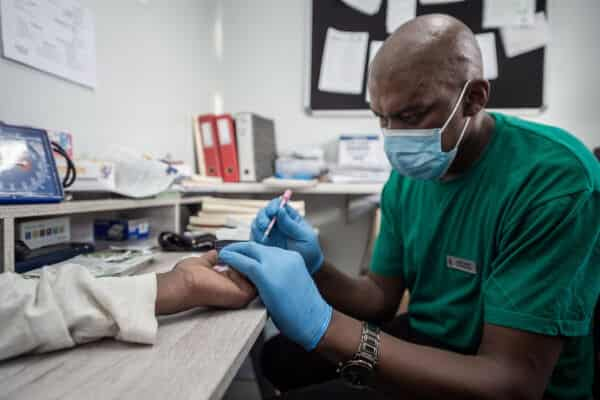The Ebonyi State Agency for the Control of AIDS (EBOSACA) on Thursday identified Abakaliki, Edda, and Ohaozara local government areas as having the highest HIV prevalence rate in Ebonyi State.
The Executive Secretary of EBOSACA, Prince Andrew Iteshi, revealed the statistic during the flag-off of the Local Government Sensitisation Tour and free medical outreach held at the Ezza North LGA Headquarters, Ebiaji, as part of the activity marking the build-up to the 2025 World AIDS Day.
He noted that the state currently has an estimated 18,000 people living with HIV, adding that the agency has intensified door-to-door HIV testing and community sensitisation across all the 13 LGAs in the state.
Providing the updated data, Prince Iteshi said that the 2018 NAIIS report placed Ebonyi’s HIV prevalence at 0.8 per cent, representing about 16,300 people.
He confirmed that 94 to 95 per cent of these cases – 15,610 individuals have already been identified and placed on treatment, noting that urban communities generally have a higher HIV burden than rural areas.
According to him, the LGAs with the highest burden included Abakaliki – 1.2 per cent prevalence, Edda (Afikpo South) and Ohaozara about 0.9 per cent, Afikpo North about 1.0 per cent, followed by Izzi and Ikwo council areas.
He noted that although daily testing reveals new cases, the agency is closing the gap through expanded community outreach.
“We are here to engage stakeholders at the grassroots, including the traditional rulers, political leaders, women groups, youth groups, and security agencies.
“Through our partners, we provide free medical services, HIV testing and counselling to reduce the spread of HIV across communities,” he stated.
Iteshi added that HIV treatment and follow-up remain free in all designated ART sites, with patients enrolling immediately after diagnosis, announcing the introduction of injectable PrEP, taken once every two months, for individuals at risk of HIV.
“Unlike the daily pill, this injectable option offers longer protection. We also distribute free condoms and run harm-reduction programs for people who inject drugs, including sterile needles,” he said.
He added that barbers, hairdressers, and beauty workers are being educated on sterilisation practices to prevent transmission through sharp objects.
Outreach Provides Free Medical Services
Iteshi added that the Federal Government, through NACA and the Global Fund, is developing sustainability plans to help states gradually assume responsibility for HIV programming.
Despite progress made so far, Iteshi hinted that reluctance by the people to take HIV tests remains a major challenge in educating the people about the need to know their HIV status.
“Testing is voluntary, and many people refuse out of fear or misinformation,” Iteshi said, urging residents to test every three months and take advantage of free services across health facilities,” he stressed.






